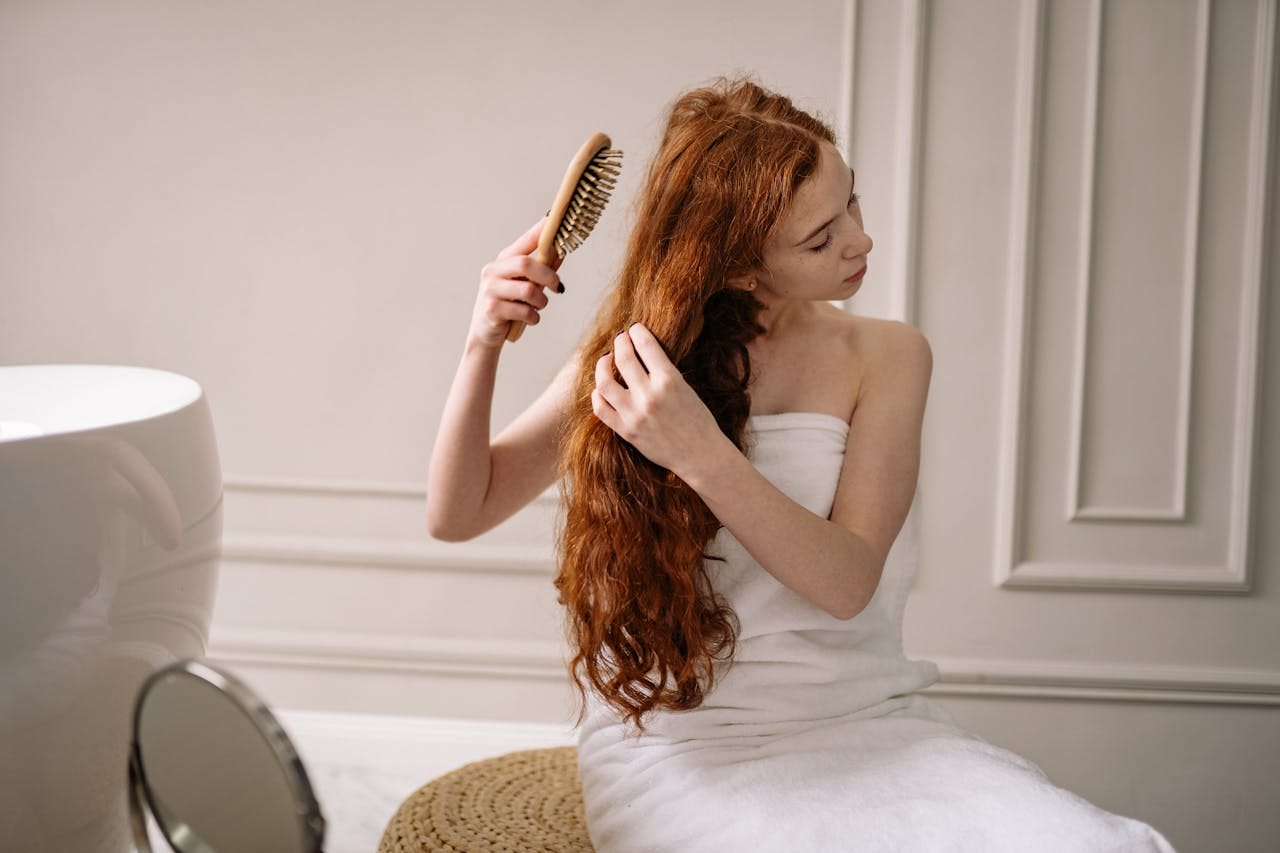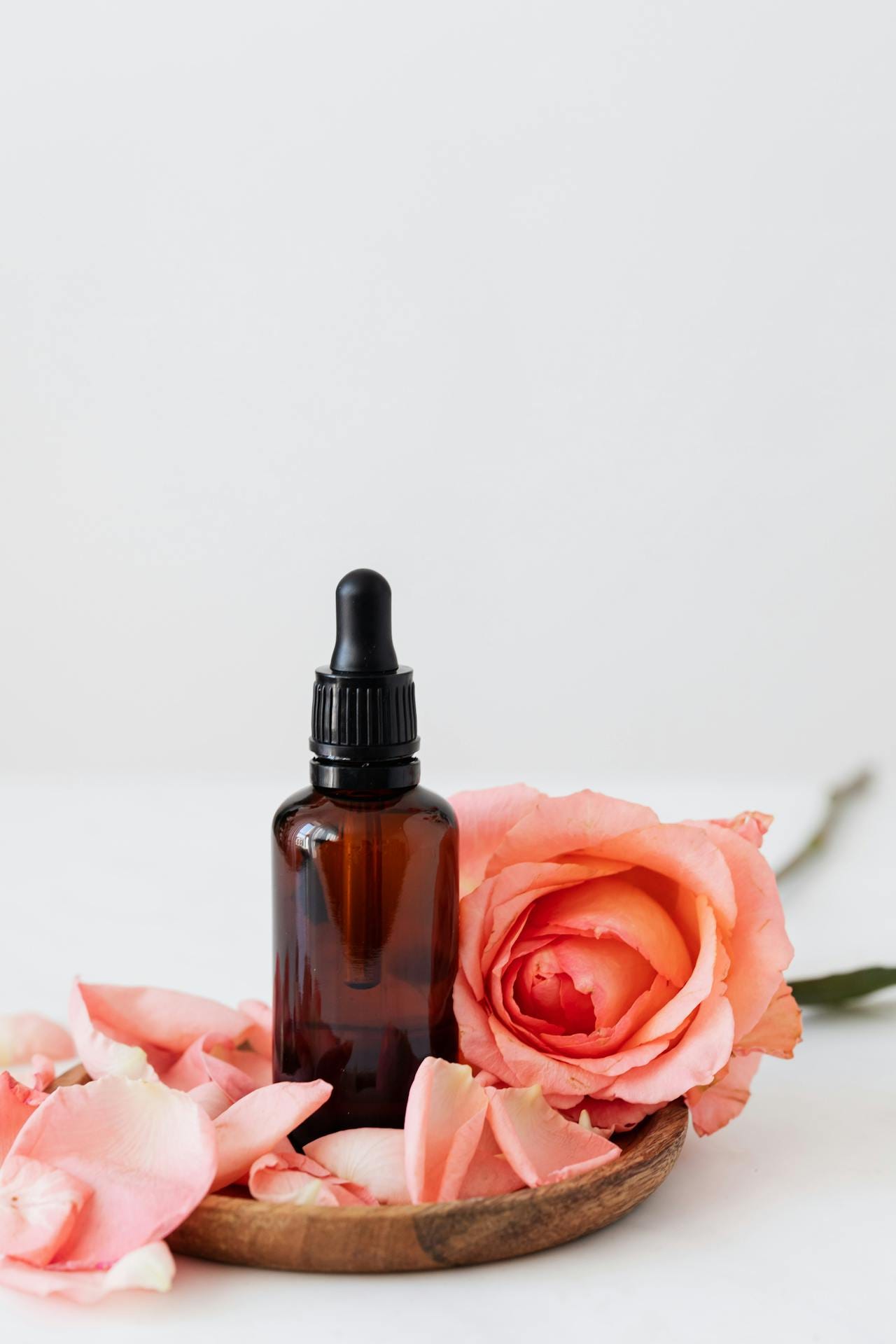Reducing Toxic Load: Shampoo & Soap
If fragrance wasn’t added to shampoos and soaps, would our noses give us a warning about the product?
My goal for 2025 is to reduce my toxic load. In my prior post, I mentioned doing research a few years ago to find a new shampoo.
I wanted something that wouldn’t dry out my scalp. But I also wanted something reasonably priced. And after research, I settled on a shampoo which I actually now realize is not sulfate-free!
I love the smell of it. It doesn’t lather as strongly as other shampoos, which made me feel more confident that it was gentler and not stripping out as much oil. And I usually only have to wash my hair every 2-3 days.
However, after researching the ingredient list I realized there may be more to be concerned with than a dry scalp.
Let’s take a look at what’s in it:
Water (Aqua), Sodium Laureth Sulfate, Sodium Chloride, Cocamidopropyl Betaine, Glycerin, Dimethiconol, Fragrance (Parfum), Carbomer, Guar Hydroxypropyltrimonium Chloride, TEA-Dodecylbenzenesulfonate, Citric Acid, PPG-9, Tetrasodium EDTA, DMDM Hydantoin, PEG-45M, Persea Gratissima (Avocado) Oil, Olea Europaea (Olive) Fruit Oil, Methylchloroisothiazolinone, Methylisothiazolinone, Sodium Benzoate, Mica (CI 77019), Titanium Dioxide (CI 77891)
(I bolded every other ingredient to make this a little easier to read)
This is quite a list! Twenty-one ingredients in total!
Some of the chemical names look intimidating, so let’s see what they do:
Sodium Laureth Sulfate is a foaming agent. It is a milder detergent than sodium lauryl sulfate, however both of these have come under scrutiny because they can dry out the skin and irritate the eyes.
Cocamidopropyl Betaine is a mild surfactant (attracting dirt & oil so it can be rinsed off), which is used in baby shampoo. It is meant to provide lather. It is even gentler than the sodium laureth sulfate. It is generally recognized as safe [GRAS] in small amounts and if rinsed off. However, it may not be best for children under two or those who are pregnant or breast-feeding.
Dimethiconol is a silicone that coats the hair strand, helping it to retain moisture and shine. It is GRAS, however there are environmental concerns about its production and use.
Guar Hydroxypropyltrimonium Chloride is a detangler and conditioner derived from the guar plant and modified to achieve the desired effects for personal care products. It is also GRAS. I appreciate that they explain some of the science in the linked article.
TEA-Dodecylbenzenesulfonate is a silicone, de-frizzer, and a surfactant. I couldn’t find many articles or studies about this chemical.
Tetrasodium EDTA is a chelating chemical—a cousin to the EDTA I’ve been taking for my metal detox. It’s used as a stabilizer to keep the minerals and metals in water from binding to the ingredients in the shampoo. It is also a possible eye irritant.
DMDM Hydantoin is a preservative (antibacterial, antifungal) to prevent the growth of bacteria, yeast, and mold. Over time it releases small amounts of formaldehyde as the chemical breaks down. This is an intended process.
This website equates it to the amount of naturally occurring formaldehyde in a medium-sized pear (~50 mg/kg). Dermal contact with solutions of 1-2% formaldehyde can cause irritation. However, shampoo contains only a small amount of formaldehyde in comparison.
This article lists some possible side effects of formaldehyde including “wheezing, watery eyes, nausea, and skin irritation.” It notes “some states, including California, Maryland, and Washington have banned the use of formaldehyde in personal care products starting in 2025.”
My concerns are 1) PEGs (see next section), 2) long-term exposure, and 3) multiple exposure routes through other commercial products (It’s also something my body doesn’t need more of in any amount).
PEG-45M moisturizes and helps with emulsion and thickening of the product. However, as I noted in my previous article, PEGs can increase the penetrability of other products into the skin. The number following the "PEG” is the approximate molecular weight. The lower the number, the more easily it penetrates the skin.
Methylchloroisothiazolinone is a preservative (antibacterial, antifungal) to prevent the growth of bacteria, yeast, and mold. It is banned in leave-in products in Europe and Canada due to allergen and skin-sensitivity issues. Europe, Canada, and the United States have approved a safe limit for use of this chemical in rinse-off products.
Methylisothiazolinone is a preservative (biocide) used to kill harmful microorganisms. It is a strong cytotoxin (toxic to cells) and can be dangerous to humans and the environment—even more so in products where it remains on the skin.
Titanium dioxide, as I mentioned in my last post, is a white metal powder designed to make the color of products more appealing. It is a possible neurotoxin, may cause oxidative stress, and can contain other toxic metal contaminants.
Dandruff Shampoo
Just for good measure, I looked at one more ingredient. In the last year or so, I decided to buy an organic dandruff shampoo with essential oils. Non-GMO. No artificial colors or fragrances. However, it does still contain an ingredient common to other dandruff shampoos:
Salicylic Acid: Breaks down the outer layer (keratin) of cells, allowing loose flakes of skin to get washed away more easily. Like some of the others above, it can cause skin irritation, dryness, and peeling.
While I didn’t break down all the ingredients, I researched the ones that were most concerning to me. The biggest test will be whether the benefits of going off shampoo outweigh any desirable features of the product.

Ditching the ‘Poo
Shampoo does have its attractions. Some people love the lather. Some people love the smell. But you can clean your hair without all of the chemicals. And, if scent is important, there are options for that, too.
I bought myself two simple ingredients and a boar bristle brush to put to the test against the twenty-one ingredients listed above.
As promised, here is the video which sparked my investigation. I will be trying this in the coming weeks to find out if it’s doable long-term and gives the results I’m hoping for.
Dr. Sam Bailey was a conventional doctor for over 20 years until she chose to leave the medical system. COVID was her eye-opener to the flaws of allopathic medicine and the systems that support it. You may recognize her from the Virus Challenge video I linked in a prior post.
If you’ve been reading my blog for the past few months, you’ll know that I, too, believe there is fraudulent activity surrounding the COVID “pandemic” and virology as a “science.” Both Dr. Sam and her husband Dr. Mark Bailey have my respect for questioning the current medical paradigm. Both of them have also taken steps to reduce chemical toxicity from their lives.
Here’s how to wash your hair without shampoo:
You’ll need baking soda and apple cider vinegar.
Gather your tools by the shower, including a measuring cup and spoon:
Wet your hair.
Mix 1 tablespoon of baking soda with 1 cup of water.
Pour half of the mixture on your scalp and scrub (focus on the scalp, not the ends).
Rinse and pour the other half on, again focusing on scrubbing the scalp.
Mix 1 tablespoon of apple cider vinegar with 1 cup of water.
As above, add half of the mixture to your scalp and scrub; and repeat with the second half.
Rinse, dry, and comb.
If you’re worried about the vinegar smell, it dissipates quickly as your hair dries. The vinegar is important for resorting the pH of your hair after the baking soda wash, so it’s best not to skip it.
As you come off of shampoo products, you may experience excess sebum (skin oil) secretion. This is because your shampoos are regularly stripping your skin of its natural layer of hydration and your body is trying to compensate by producing more oil. You may wish to slowly lengthen the time between washes until your body adjusts. Over time your skin will produce less oil.
Dr. Sam recommends not to wet your hair between washes, as this can encourage sebum production. You may wish to buy & use a shower cap.
Brush dry hair daily with a natural boar bristle brush. This helps distribute any oils along the strands so it doesn’t just build up on the scalp.
After every day or two, wash the boar bristle brush with a little dish soap and make sure it dries thoroughly—if not cleaned, the brush can become dirty and the excess oil and dirt from your hair can get rubbed back into your scalp.
Pay attention to skin sensitivity. Baking soda scrub is like a clarifying shampoo and is not intended for daily use.
Here is an article from someone else who tried going off of shampoo and loved the results.
Variations
Add a few drops of essential oil to the baking soda wash if desired.
Add a hydrating oil to hair ends after the apple cider vinegar wash, if desired (coconut, olive, or argan).
Substitute white vinegar instead of apple cider vinegar.
Substitute rye flour instead of baking soda.
Benefits
Baking soda is a natural exfoliant. It can also reduce dandruff.
Apple cider vinegar can detangle and add shine to your hair. It is anti-inflammatory and stimulates your scalp.
With assistance, I gave this wash a try for the first time, the night before this post releases. Afterward, my scalp felt amazing! It was tingly and light. No itching or irritation. And it doesn’t feel dried out. I still have a little excess oil, since it was different doing a hair wash without lather. We’ll see how subsequent washes go and if brushing helps.
No-Soap Body Wash
To go along with the shower routine, I’m looking at switching to a no-soap body wash. This wash consists of one ingredient: water.
Dr. Sam also did a video on this:
Again, the concern with soap is similar to concerns about shampoo. Especially if you’re using a liquid body wash.
Strips the skin of natural body oils.
Contains some of the same chemicals found in shampoo.
Puts you in a cycle of having to continually buy the product (sometimes additional ones, too—like lotion, to combat side effects like sensitivity and dryness).
But what about body odor?
An important thing to recognize about scent—both from our bodies and from things we may use or consume: scent is a communication. Scent can be a warning or an invitation.
Fragrance is a huge selling point for many products. There is fragrance in almost all personal care products I’ve seen. The reason is usually twofold: 1) to create an inviting product and 2) to cover up unwanted smells of surfactants and other chemicals.
If fragrance wasn’t added to shampoos and soaps, would our noses give us a warning about the product?
Scent is also a way in which your body communicates with you. Your body and its outputs smell differently when you’re sick. And when it comes to body odor (before our scent ripens to the “locker-room” phase) there is a natural scent unique to each individual that actually is not unpleasant.
Most of the time, if our bodies start to smell it just means it’s time to wash again. If it persists after washing, that might be a good sign to look for the root cause—like reducing toxic load; adjusting diet/physical activity; addressing fear, anger, and stress tied to hormones; etc.
When I want to experience fragrance, I have started turning to essential oils. These, too, have both benefits and safety considerations, but they feel closer to nature and my body generally has a positive reaction to them. I appreciate the safety education and testing that go into good essential oil products.
Besides feeling and smelling clean, the other thing we may look for in a shower is exfoliation. This can be achieved without the use of soap, too!
Dr. Sam mentions a practice I have heard of, but haven’t had the proper tools to try: dry brushing. This involves running a natural bristle brush over the body to loosen dead skin so the shower water can wash it away. In her routine she does this once a week. I bought a long-handled brush so I can give this a try as well.
The video linked above shows a method of dry brushing, so I won’t describe it. It’s more helpful to watch it done, anyway.
I’m looking forward to a new shower routine! In fact, after the new hair wash I’m feeling a bit of a mood boost.
Any Substance Healthful to An Organism
There are more toxins in our environment than just chemicals. There are ideas we take into our minds, things we experience, emotions we embody.
Much of what I’ve been researching these last few months is more shocking to me than finding out there is formaldehyde in my shampoo. It’s enough to make me feel genuinely helpless and hopeless at times. Those are two of the most detrimental emotions a person can experience.
I won’t be sharing those helpless, hopeless things here anytime soon. Because, just as important as knowing there is toxicity to be aware of, is providing something good and wholesome to replace it with. I think I would rather provide something hopeful.
I want to invite you to visit my companion blog, “I Believe in Christ.”
In my experience, there is nothing more empowering, uplifting, hopeful, peaceful, and joyful than a connection to God. Even in the midst of trauma—or maybe especially in the midst of trauma—I have felt incredible, deep love and peace in my soul that could only come from a divine source.
God is both hope and love. He can enable those qualities in you, too.
Even if you think religion isn’t for you, I hope you’ll give my blog a look. You could learn something about your friends who do believe in God.
There are three introductory posts that answer the questions: Who is Jesus Christ? What is the Purpose of Life? and What is the Need for a Church? Following these is my first main post—my personal witness of Jesus Christ: what he has done for me and how I am working on developing a relationship with him. I plan to add a short post weekly, energy-levels permitting.
I’m looking forward to growing this second blog, which means more to me than Ordinary Girl because it touches on things of the soul.
In the meantime, thank you for reading along with my journey here! I hope you’ll find ways to reduce your own toxic load. The human body is amazing and especially its ability to heal!
With love,
Ordinary Girl







